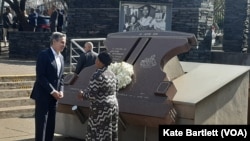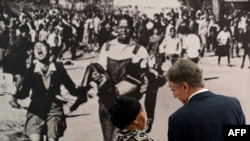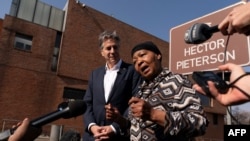U.S. Secretary of State Antony Blinken is in South Africa on the first leg of an Africa trip. His first stop was a poignant one, as he visited a museum that commemorates a key moment in the anti-apartheid struggle.
Secretary Blinken visited the Hector Pieterson Museum and memorial in the township of Soweto, once home to South Africa’s first democratic president, Nelson Mandela, on Sunday.
The museum is named after Hector Pieterson, who was just 12 years old when he was shot and killed by police during the Soweto Uprising of 1976.
Pieterson was among Black students protesting the use of Afrikaans, regarded as the language of the oppressor, in schools.
A black-and-white photo taken of Pieterson being carried by a distraught fellow student sent shockwaves around the world and helped galvanize the anti-apartheid movement abroad.
Blinken laid a wreath at the site and was accompanied on his tour of the museum by Pieterson’s sister, Antoinette Sithole.
Blinken appeared to make reference to the United States’ own fight for racial equality when he addressed the news media after the visit.
“Hector’s story is one that really resonates because we have our own struggle for freedom and equality in the United States," said Blinken. "And South Africa’s story is unique but there are also so many commonalities, and that resonates powerfully.”
Blinken said the museum stands as a testament to what young people can accomplish.
“It’s inspiring people to see the power that young people have to make change, to make change in all of our societies," he said.
On Monday, America’s top diplomat will meet for talks with South Africa’s foreign minister, Naledi Pandor, and launch a new U.S. Strategy for Sub-Saharan Africa. Elements of the policy, including climate change, trade, health and food insecurity, will all be topics of discussion.
Blinken laid a wreath at the site and was accompanied on his tour of the museum by Pieterson’s sister, Antoinette Sithole.











